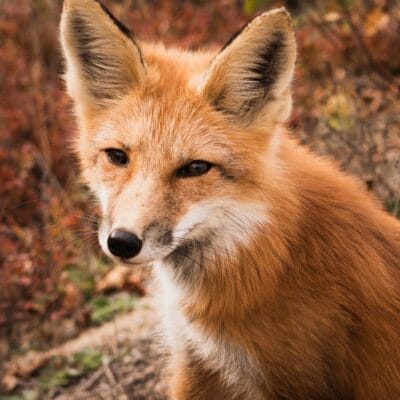Creating a wildlife-friendly backyard is not just a trend; it’s a vital step toward fostering biodiversity and supporting local ecosystems. When you cultivate an environment that welcomes various species, you contribute to the health of the planet. Your backyard can serve as a sanctuary for birds, butterflies, bees, and other creatures that play essential roles in pollination and pest control.
By understanding the importance of these interactions, you can appreciate how your small efforts can lead to significant ecological benefits. Moreover, a wildlife-friendly backyard enhances your personal experience with nature. Imagine stepping outside to the cheerful chirping of birds or the gentle flutter of butterflies dancing among your flowers.
These moments can bring joy and tranquility to your daily life. By creating a space that nurtures wildlife, you not only support the environment but also enrich your own well-being. The connection you foster with nature can lead to a deeper appreciation for the world around you, encouraging mindfulness and a sense of responsibility toward conservation.
Key Takeaways
- A wildlife-friendly backyard is important for supporting local ecosystems and biodiversity
- Choosing native plants helps attract and support local wildlife species
- Providing shelter and nesting sites, such as birdhouses and brush piles, is crucial for wildlife
- Offering a water source, like a birdbath or pond, is essential for wildlife to thrive
- Avoiding pesticides and chemicals helps protect wildlife and the environment
Choosing Native Plants to Attract Wildlife
Selecting native plants is one of the most effective ways to attract wildlife to your backyard. Native species are adapted to your local climate and soil conditions, making them easier to grow and maintain. They provide essential food sources and habitats for local wildlife, including insects, birds, and small mammals.
By choosing plants that are indigenous to your area, you create a thriving ecosystem that supports the natural food web. In addition to their ecological benefits, native plants often require less water and fewer resources than non-native varieties. This means you can enjoy a beautiful garden while also conserving water and reducing your reliance on fertilizers and pesticides.
Consider incorporating a variety of native flowers, shrubs, and trees into your landscape. Not only will this diversity attract a wider range of wildlife, but it will also create visual interest throughout the seasons as different plants bloom and change.
Providing Shelter and Nesting Sites for Wildlife

Creating shelter and nesting sites is crucial for supporting wildlife in your backyard. Many animals need safe spaces to rest, hide from predators, and raise their young. You can easily provide these habitats by incorporating features like brush piles, rock gardens, or even birdhouses into your landscape.
These elements not only offer protection but also encourage various species to visit and settle in your yard. Birdhouses are particularly effective in attracting feathered friends. When you install birdhouses, be sure to choose designs that cater to the specific species in your area.
Different birds have varying preferences for nesting sites, so research what works best for your local avian population. Additionally, leaving some areas of your yard wild and untamed can create natural habitats for ground-nesting birds and small mammals. By providing these essential shelters, you contribute to the survival of local wildlife while enjoying the beauty they bring to your outdoor space.
Offering a Water Source for Wildlife
Water is a fundamental resource for all living creatures, making it essential to provide a reliable source in your backyard. A simple birdbath or small pond can attract various wildlife, from birds to insects and even mammals. When designing your water feature, consider adding shallow areas where smaller animals can safely drink without the risk of drowning.
This thoughtful design will encourage more species to visit your yard. In addition to providing hydration, water sources can also serve as vital habitats for aquatic life. If you choose to create a pond, consider adding native plants around its edges to enhance its ecological value.
These plants can provide shelter for frogs and insects while also improving water quality by filtering pollutants. By offering a water source, you not only support wildlife but also create a dynamic ecosystem that thrives in your backyard.
Avoiding the Use of Pesticides and Chemicals
One of the most significant threats to wildlife is the use of pesticides and chemicals in gardening practices. These substances can harm beneficial insects, birds, and other creatures that play crucial roles in maintaining ecological balance. By avoiding these harmful products, you create a safer environment for wildlife while promoting healthier soil and plants in your garden.
Instead of relying on chemicals, consider adopting organic gardening practices that focus on natural pest control methods. For instance, introducing beneficial insects like ladybugs or lacewings can help manage pest populations without harming other wildlife. Additionally, companion planting—growing certain plants together to deter pests—can be an effective strategy for maintaining a healthy garden ecosystem.
By embracing these natural alternatives, you contribute to a more sustainable environment that supports both wildlife and your gardening efforts.
Creating a Feeding Station for Wildlife

Establishing a feeding station is an excellent way to attract wildlife to your backyard while providing them with essential nourishment. Bird feeders filled with seeds or suet can draw various bird species throughout the year, offering you the chance to observe their behaviors up close. When setting up feeders, consider placing them near natural cover like shrubs or trees so birds feel safe while feeding.
In addition to bird feeders, you can create feeding stations for other wildlife by offering specific food sources tailored to their needs. For example, placing fruit scraps or nuts on the ground can attract squirrels and raccoons, while leaving out sunflower seeds may entice chipmunks. Be mindful of local regulations regarding feeding wildlife; some areas may have restrictions in place to protect certain species or prevent human-wildlife conflicts.
By thoughtfully creating feeding stations, you not only support local wildlife but also enhance your connection with nature as you witness the diverse visitors that come to dine in your backyard.
Maintaining a Wildlife-Friendly Backyard
Maintaining a wildlife-friendly backyard requires ongoing effort and attention but is incredibly rewarding in the long run. Regularly monitoring your garden for invasive species is essential; these plants can outcompete native flora and disrupt local ecosystems. By promptly removing invasive species, you help preserve the natural balance in your yard and ensure that native plants thrive.
Additionally, seasonal maintenance tasks such as pruning dead branches or cleaning out birdhouses are vital for keeping your backyard welcoming for wildlife. Creating a schedule for these tasks can help you stay organized and ensure that your efforts yield positive results throughout the year. Remember that patience is key; it may take time for wildlife to discover and inhabit your space fully.
However, with consistent care and attention, you will gradually see an increase in biodiversity and activity in your backyard.
Enjoying the Benefits of a Wildlife-Friendly Backyard
The benefits of creating a wildlife-friendly backyard extend far beyond environmental impact; they also enrich your personal life in numerous ways. As you cultivate an inviting space for wildlife, you may find yourself spending more time outdoors, enjoying the sights and sounds of nature right at home. This connection fosters mindfulness and relaxation, allowing you to escape the stresses of daily life.
Moreover, observing wildlife can be an educational experience for you and your family. You may discover new species or learn about their behaviors through careful observation. This knowledge can inspire a greater appreciation for nature and encourage responsible stewardship of the environment.
Ultimately, by creating a wildlife-friendly backyard, you not only contribute positively to local ecosystems but also enhance your quality of life through meaningful interactions with the natural world around you.
If you’re interested in creating a wildlife-friendly backyard, you may also want to check out The Ultimate Guide to Solo Travel on Reviewdia. Just like transforming your backyard into a haven for wildlife requires careful planning and consideration, embarking on a solo travel adventure also requires thoughtful preparation and research. Both articles offer valuable insights and tips for those looking to enhance their experiences, whether in their own backyard or exploring the world solo.
FAQs
What does it mean to have a wildlife-friendly backyard?
Having a wildlife-friendly backyard means creating a space that provides food, water, shelter, and nesting sites for local wildlife such as birds, butterflies, bees, and other beneficial insects.
Why is it important to create a wildlife-friendly backyard?
Creating a wildlife-friendly backyard is important for supporting local ecosystems, promoting biodiversity, and providing habitats for wildlife to thrive. It also helps to create a more sustainable and balanced environment.
How can I attract wildlife to my backyard?
You can attract wildlife to your backyard by planting native plants, providing water sources such as birdbaths or ponds, adding bird feeders and houses, and creating natural habitats like brush piles and rock piles.
What are some examples of native plants that attract wildlife?
Examples of native plants that attract wildlife include milkweed for monarch butterflies, coneflowers for bees and butterflies, and oak trees for birds and other wildlife.
How can I make my backyard safe for wildlife?
You can make your backyard safe for wildlife by avoiding the use of pesticides and chemicals, minimizing the use of artificial lighting at night, and creating a variety of habitats for different types of wildlife.
Are there any specific guidelines or regulations for creating a wildlife-friendly backyard?
Specific guidelines and regulations for creating a wildlife-friendly backyard may vary depending on your location and local wildlife conservation laws. It’s important to research and follow any relevant guidelines or regulations in your area.












No Comment! Be the first one.